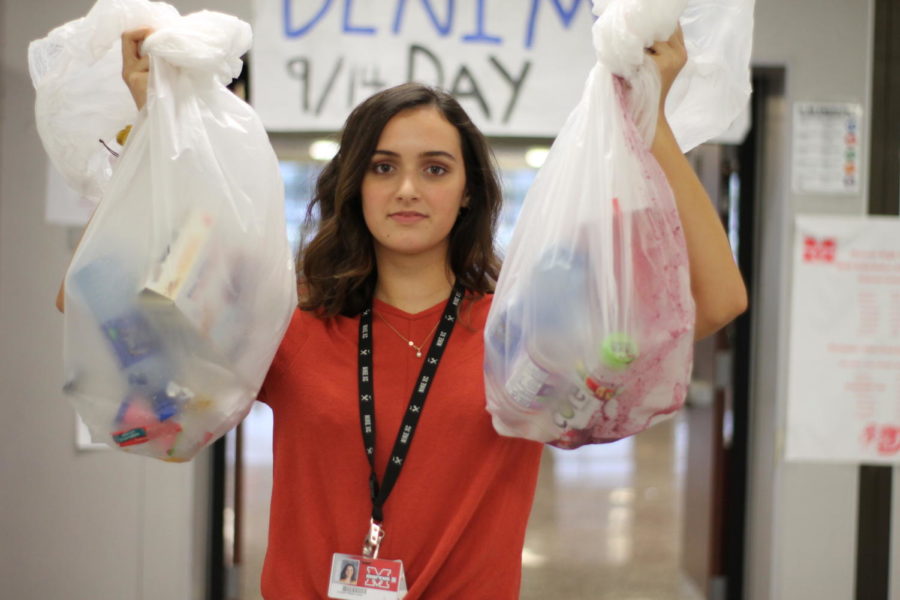Investigation shows almost no recycling takes place on campus
This is all of the recycling after two lunches on Sept. 14. The bag on the right was unable to recycled because someone had dumped in a full orange drink and pink smoothie.
Students Don’t Recycle
The vast majority of students on campus recycle at home. However, far fewer, 29 percent, recycle at school according to The Marquee’s recent poll of 300 students.
“I think that when people want to throw something away, they just throw it in the trash to get rid of it instead of recycling,” sophomore Zoe Cotton said.
According to the poll, 73 percent of students use plastic water bottles at least some of the time. Just a handful of plastic bottles actually make it into the recycling bins, despite the amount of students using them.
Though 29 percent said they recycle at school, by the end of the day on Sept. 13, out of all the students who ate or passed through the commons, only five plastic water bottles were placed in the recycling bin. However, a cup of orange soda was also thrown in, causing the recycling for the day to be thrown out. Meanwhile, multiple trash cans overflowed with water bottles, aluminum cans and paper bags that were mostly recyclable.
Head custodian Kim Tran believes students could do a much better job recycling. Senior Clayton Hackler agrees that students need to improve.
“It doesn’t matter how good the recycling system is,” Hackler said. “The students have to recycle in order for it to work.”
The city picks up the recycling twice a week, but the school is responsible for collecting recycling, providing bins and using them correctly. Currently, there are recycling bins in every classroom, however there are only two bins in the cafeteria, the area of the school that produces the most waste.
“I’d love to see more recycling done and show kids just how much recycled materials we could actually create,” AP environmental science teacher Adam Hovde said.
Currently there are three large recycling bins in a custodial closet no longer in use. Tran says that she was told to store the bins in there for the Earth Club to use when they collected recycling. However, that is not being done anymore.
“We could probably figure out some ways to improve on that,” assistant principal Jason Mullin said. “That’s something we could probably look at. Try to find other locations to add more recycling containers in [the cafeteria].”
Students don’t trust school recycling
Almost half of students believe the school recycling never makes it to the recycling trucks because they have seen custodians dropping bags of recycling into the normal trash.
Junior Andrea Toth doesn’t recycle at school because she is skeptical about the recycling system.
“I think they throw it away with the regular trash, so why would I go through the effort if it’s all going to go to the same place?” Toth said.
However, Tran does instruct the custodian crew to recycle, but the students and staff are using the recycling bins and trash cans interchangeably. She says her staff often goes as far as sorting recyclable objects out of the trash cans, but that isn’t part of their job, and they often don’t have the time to sort through every bin. Therefore, many bags of recycling have to be thrown away with the trash.
Assistant Principal Jason Mullin has seen the custodians sort and take out the recycling bins every day.
Why recycling works
Skeptics often call the integrity of recycling into question by claiming the energy — manpower, electricity, gasoline-fueled trucks — used to recycle outweighs the resources that are actually saved. However, the recycling process is not about energy, it’s about raw materials.
Resources such as aluminum and plastic are becoming more scarce, and the only way to keep up with the rising demand for these products is to reuse them. By reusing the materials that have already been refined, raw resources such as trees, oil and aluminum can be saved.
Hovde stresses the importance of recycling for resource recovery.
“It’s not about the energy, it’s about the resource,” Hovde said. “We’re really good at recycling aluminum now, because we have to be.”




